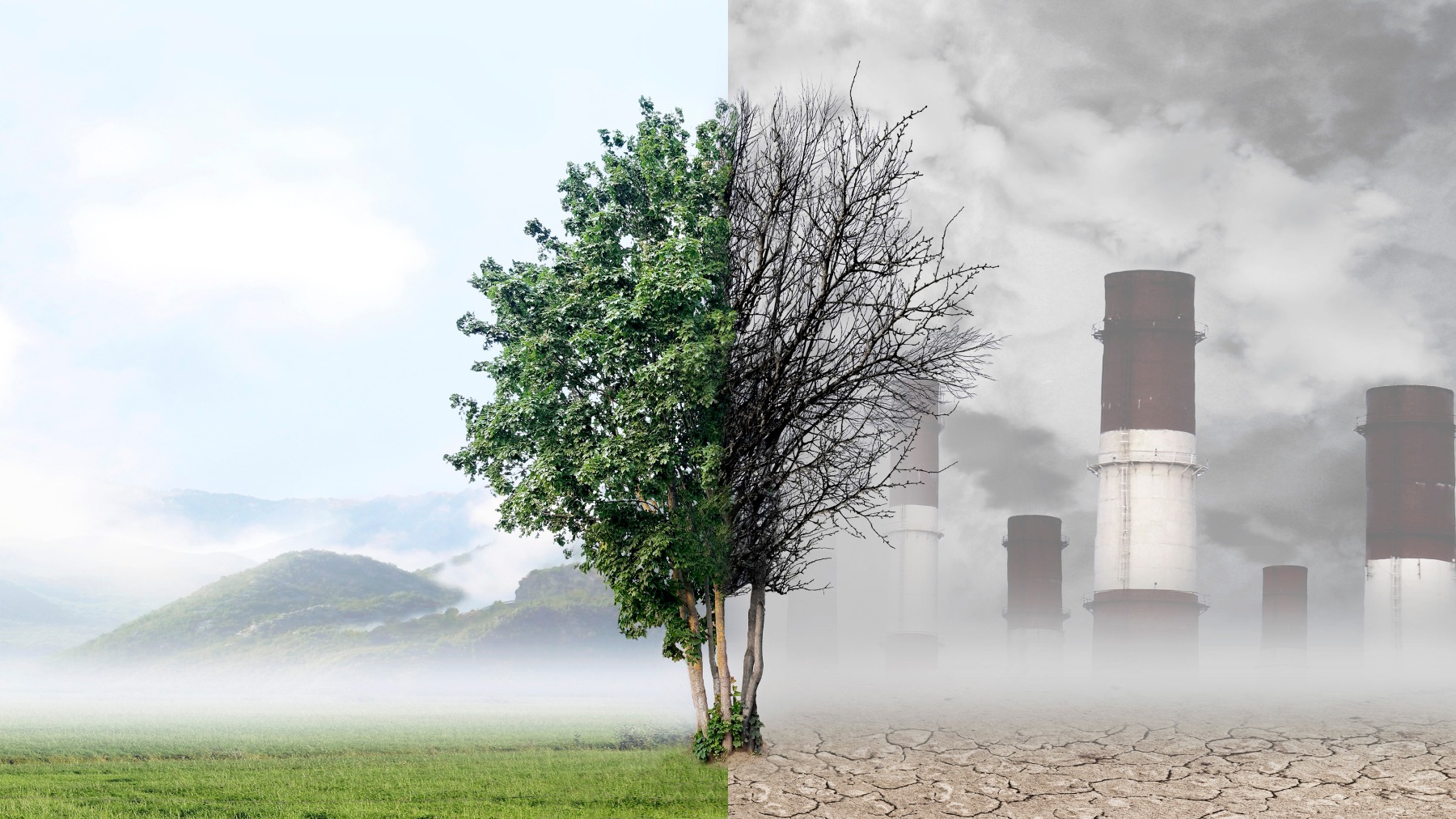Air Pollution

Air pollution is a pervasive environmental issue characterized by the presence of harmful substances in the Earth's atmosphere. These pollutants, which include gases, particulate matter, and chemicals, pose significant threats to human health, ecosystems, and the environment as a whole. Air pollution can originate from natural sources such as wildfires and volcanic eruptions, but it is primarily driven by human activities such as industrial emissions, vehicle exhaust, agricultural practices, and energy production. In this essay, we will examine the causes, effects, and potential solutions to air pollution.
Causes of Air Pollution:
Combustion of Fossil Fuels: The burning of fossil fuels, including coal, oil, and natural gas, for energy production, transportation, and industrial processes, is a major source of air pollution. Combustion releases pollutants such as carbon dioxide (CO2), sulfur dioxide (SO2), nitrogen oxides (NOx), and particulate matter (PM), which contribute to smog, acid rain, and respiratory problems.
Vehicle Emissions: Motor vehicles, including cars, trucks, buses, and motorcycles, emit pollutants such as carbon monoxide (CO), nitrogen oxides (NOx), volatile organic compounds (VOCs), and particulate matter (PM) from their tailpipes. Traffic congestion in urban areas exacerbates vehicle emissions, leading to poor air quality and health impacts for residents.
Industrial Activities: Industrial processes, including manufacturing, mining, and construction, release pollutants such as sulfur dioxide (SO2), nitrogen oxides (NOx), volatile organic compounds (VOCs), and hazardous chemicals into the air. Industrial emissions contribute to smog formation, air toxics, and occupational health risks for workers.
Agricultural Practices: Agricultural activities, including livestock farming, crop production, and fertilizer application, release pollutants such as ammonia (NH3), methane (CH4), and nitrous oxide (N2O) into the atmosphere. Agricultural emissions contribute to air quality degradation, greenhouse gas emissions, and environmental impacts such as acid deposition and eutrophication.
Waste Management: Improper waste disposal, including open burning, landfilling, and incineration, releases pollutants such as carbon monoxide (CO), methane (CH4), and volatile organic compounds (VOCs) into the air. Waste management facilities and landfills emit odors, air toxics, and greenhouse gases, contributing to local air pollution and public health concerns.
Effects of Air Pollution:
Health Impacts: Air pollution poses significant risks to human health, leading to respiratory diseases, cardiovascular disorders, and premature mortality. Inhalation of pollutants such as particulate matter (PM), nitrogen dioxide (NO2), and ozone (O3) can cause asthma, bronchitis, lung cancer, and other respiratory ailments, particularly in vulnerable populations such as children, the elderly, and individuals with pre-existing health conditions.
Environmental Degradation: Air pollution has adverse effects on ecosystems, biodiversity, and natural habitats. Pollutants such as sulfur dioxide (SO2), nitrogen oxides (NOx), and ammonia (NH3) contribute to acid rain, soil acidification, and nutrient imbalances, affecting plant growth, aquatic ecosystems, and soil quality. Ground-level ozone (O3) damages vegetation, reduces crop yields, and disrupts ecosystem functions.
Climate Change: Air pollution is a significant driver of climate change, contributing to the enhanced greenhouse effect and global warming. Greenhouse gases such as carbon dioxide (CO2), methane (CH4), and nitrous oxide (N2O) trap heat in the atmosphere, leading to rising temperatures, changing weather patterns, and sea level rise. Air pollution exacerbates the impacts of climate change, amplifying extreme weather events, heatwaves, and natural disasters.
Economic Costs: Air pollution imposes substantial economic costs on society, including healthcare expenditures, productivity losses, and environmental damages. Health-related costs associated with air pollution, including medical treatment, hospitalization, and premature mortality, place a significant burden on healthcare systems and economies worldwide. Environmental degradation and ecosystem services losses further contribute to economic losses in agriculture, tourism, and natural resource sectors.
Social Justice Issues: Air pollution disproportionately affects marginalized communities, exacerbating social and environmental injustices. Low-income neighborhoods, communities of color, and indigenous populations often bear a disproportionate burden of pollution from industrial facilities, traffic congestion, and inadequate access to clean air and water. Environmental justice concerns include disparities in exposure to pollution, access to environmental resources, and participation in decision-making processes.
Potential Solutions to Air Pollution:
Transition to Clean Energy: Promoting renewable energy sources such as solar, wind, and hydropower can reduce reliance on fossil fuels and mitigate air pollution from energy production. Investing in clean energy technologies, energy efficiency measures, and sustainable transportation systems can help reduce greenhouse gas emissions and improve air quality.
Vehicle Emissions Reduction: Implementing stricter vehicle emissions standards, promoting electric vehicles, and investing in public transportation infrastructure can reduce emissions from motor vehicles and improve air quality in urban areas. Encouraging alternative modes of transportation such as cycling, walking, and carpooling can help reduce traffic congestion and air pollution.
Industrial Pollution Control: Enforcing environmental regulations, implementing pollution prevention measures, and adopting cleaner production technologies can reduce emissions from industrial facilities and improve air quality in industrialized regions. Promoting energy efficiency, resource conservation, and pollution abatement technologies can help industries reduce their environmental footprint and minimize pollution.
Sustainable Agriculture: Implementing sustainable farming practices such as organic agriculture, agroforestry, and soil conservation can reduce agricultural emissions and minimize air pollution from livestock farming and crop production. Promoting precision agriculture, nutrient management, and integrated pest management can help minimize fertilizer runoff and pesticide pollution.
Waste Management Strategies: Improving waste management practices such as recycling, composting, and waste-to-energy technologies can reduce emissions from waste disposal and landfilling. Implementing waste reduction, reuse, and recycling programs can minimize the generation of solid waste and reduce air pollution associated with waste management activities.
Conclusion: Air pollution is a complex and multifaceted environmental problem that requires urgent action to address its causes and mitigate its impacts. By implementing regulatory measures, adopting clean energy technologies, promoting sustainable transportation systems, and improving waste management practices, we can reduce emissions of harmful pollutants and protect human health, ecosystems, and the environment. Collaboration among governments, industries, communities, and individuals is essential to achieve clean air and ensure a sustainable future for generations to come.
Thank you,